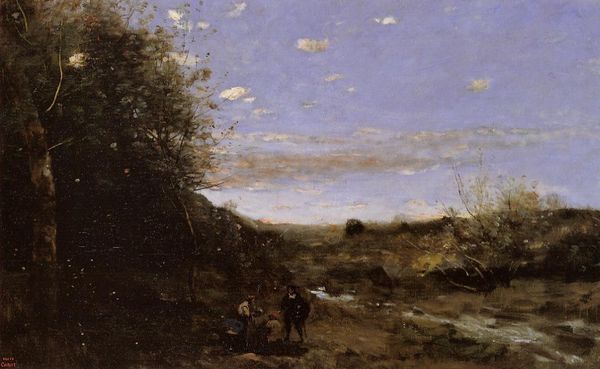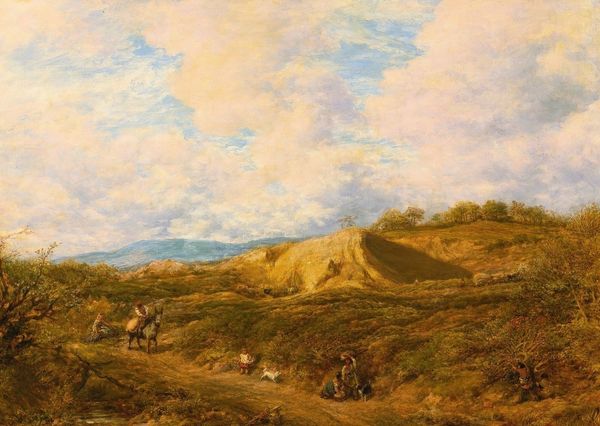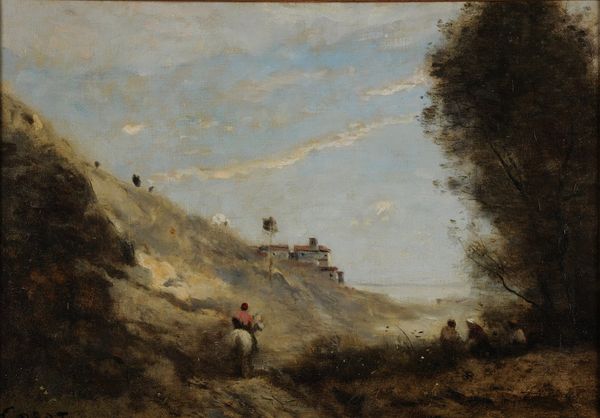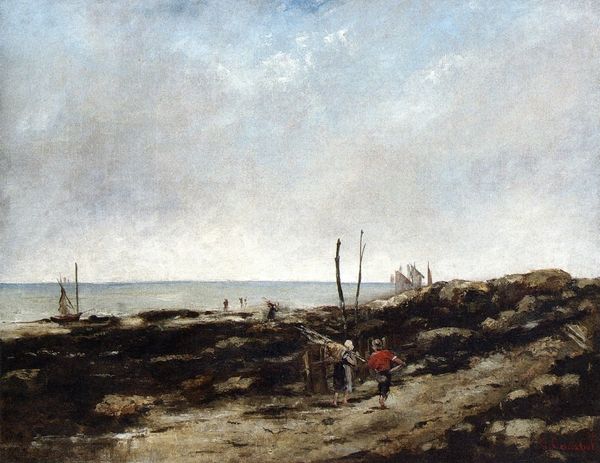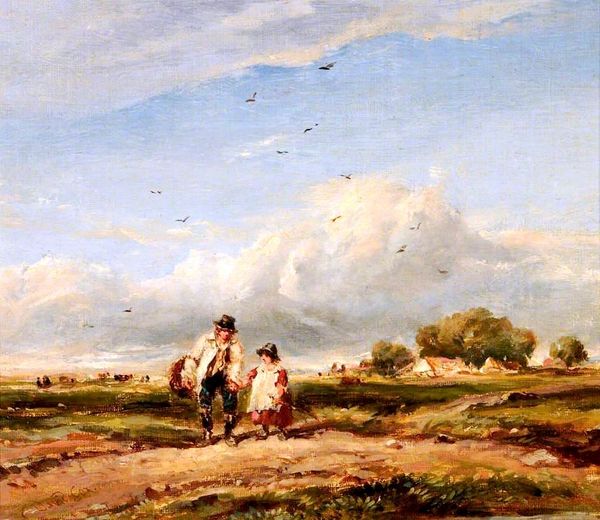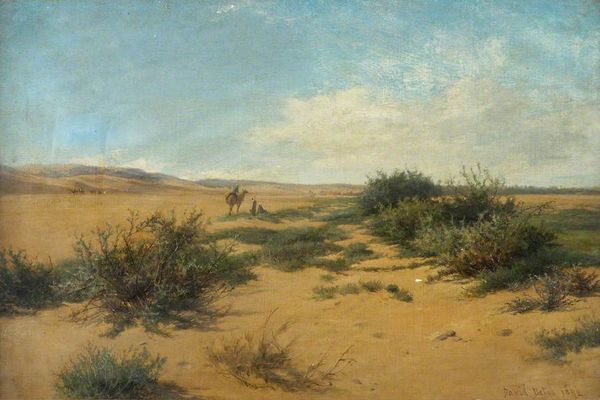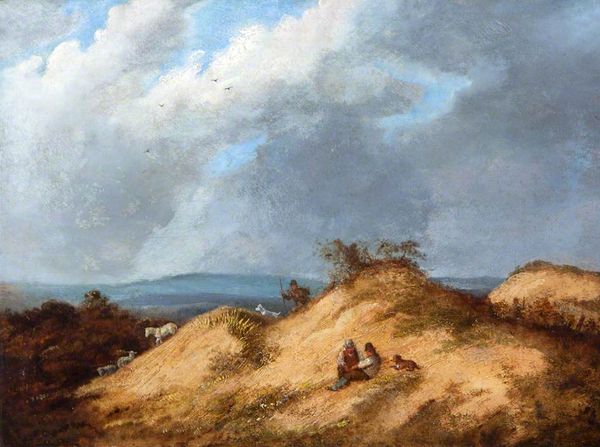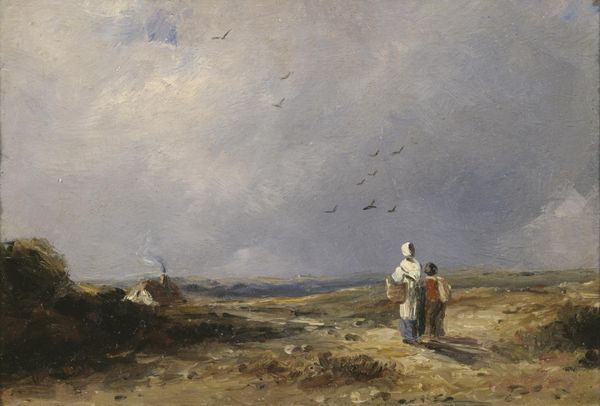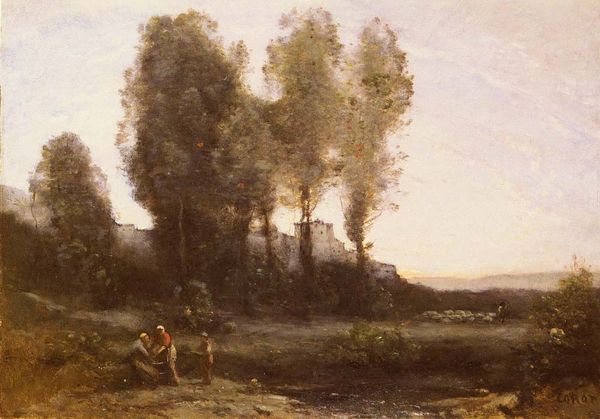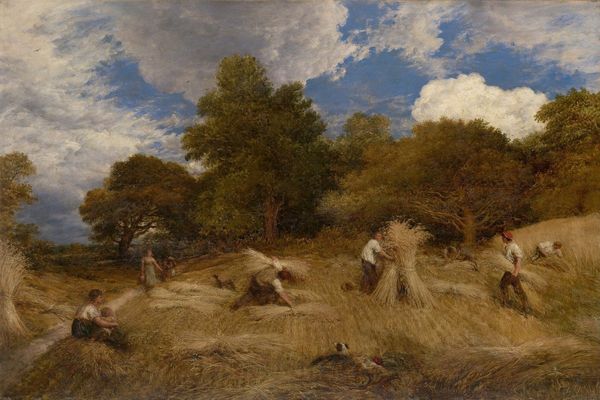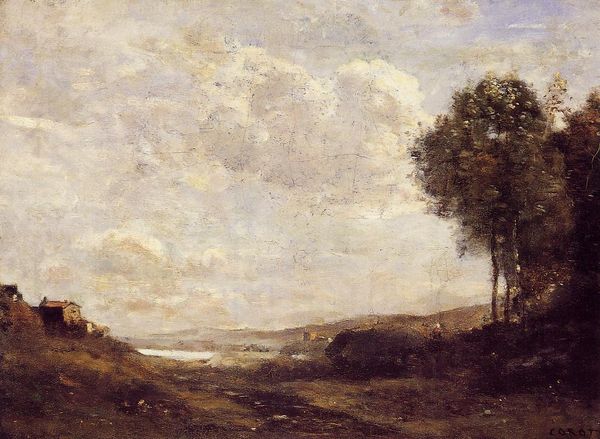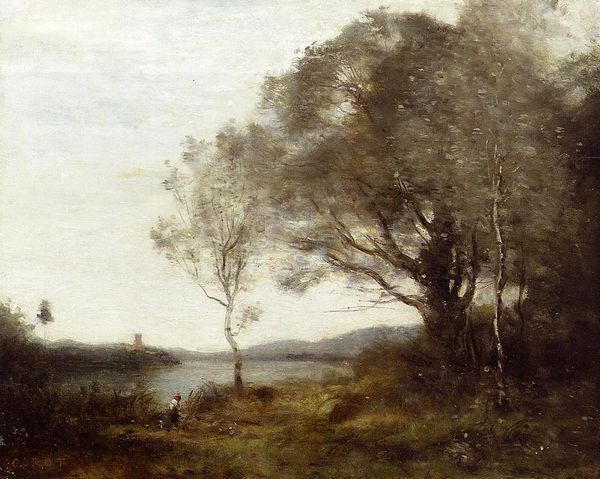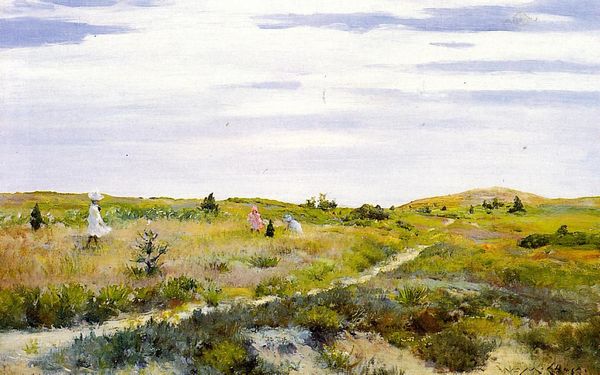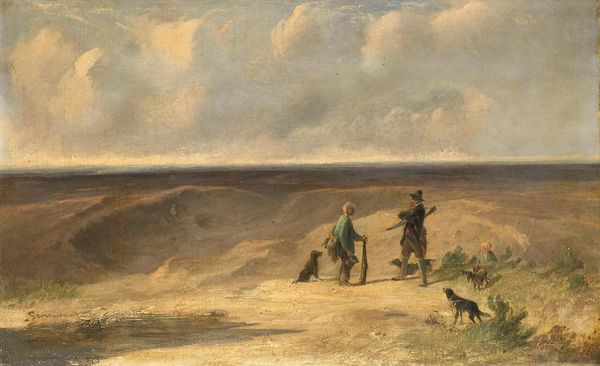
Dimensions: 67.3 x 34.6 cm
Copyright: Public domain
Editor: So, here we have Camille Corot's "A Dune at Dunkirk" from 1873. It's an oil painting, and what strikes me immediately is how the figures seem so integrated into the landscape, almost emerging from the dunes themselves. What do you see in this piece, particularly considering its materials and context? Curator: The roughness of the application, the visible brushstrokes… these all speak to a departure from the academic polish then expected. Corot's interest wasn't solely in representing the scene but also in the very act of painting, in exploring the materiality of the oil paint. Think about the pigments available to him at the time – how did that influence the palette? Were these locally sourced materials perhaps? Editor: That's interesting! So, you're saying the painting isn't just *of* Dunkirk, but *made* with a conscious awareness of its own construction? I hadn't really considered where he would have got the materials at that time. Curator: Precisely! The very act of painting en plein air, directly in front of the subject, transforms the process. The wind, the light, the shifting sands – these are all factors in the work’s creation, aren't they? The labour involved. It moves painting from a purely intellectual exercise to a physical interaction with the world, changing our conception of 'fine art' itself. Does seeing it this way change the appeal? Editor: Absolutely! It makes me think about the physical labour of the people depicted as well, compared with the labour Corot used in painting the piece. It makes me think of painting itself as a process closer to labour than I had considered. Curator: Exactly! So often we consider only what is represented, and we ignore the means of representation, as well as their impact and production. This painting encourages you to do just that. Editor: I never considered the labor or materials of painting, and how that blurs the boundary between it and other processes. Thanks!
Comments
No comments
Be the first to comment and join the conversation on the ultimate creative platform.
